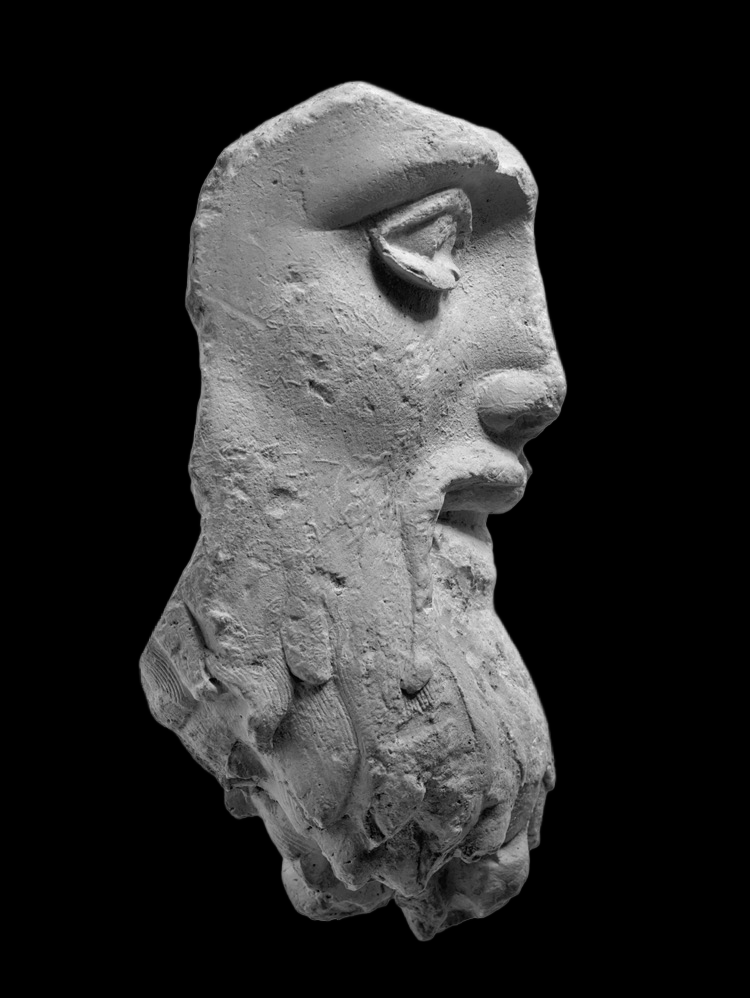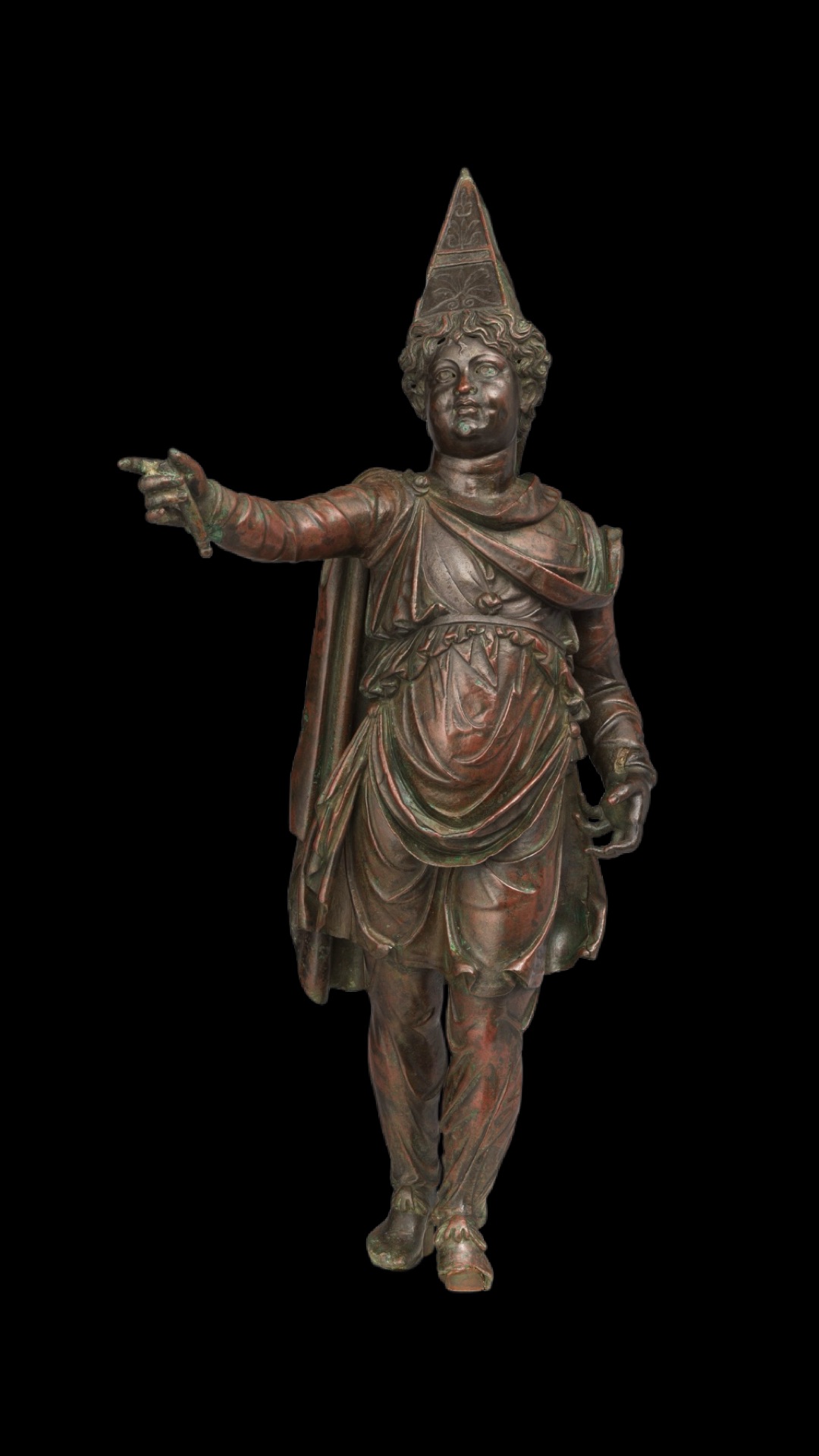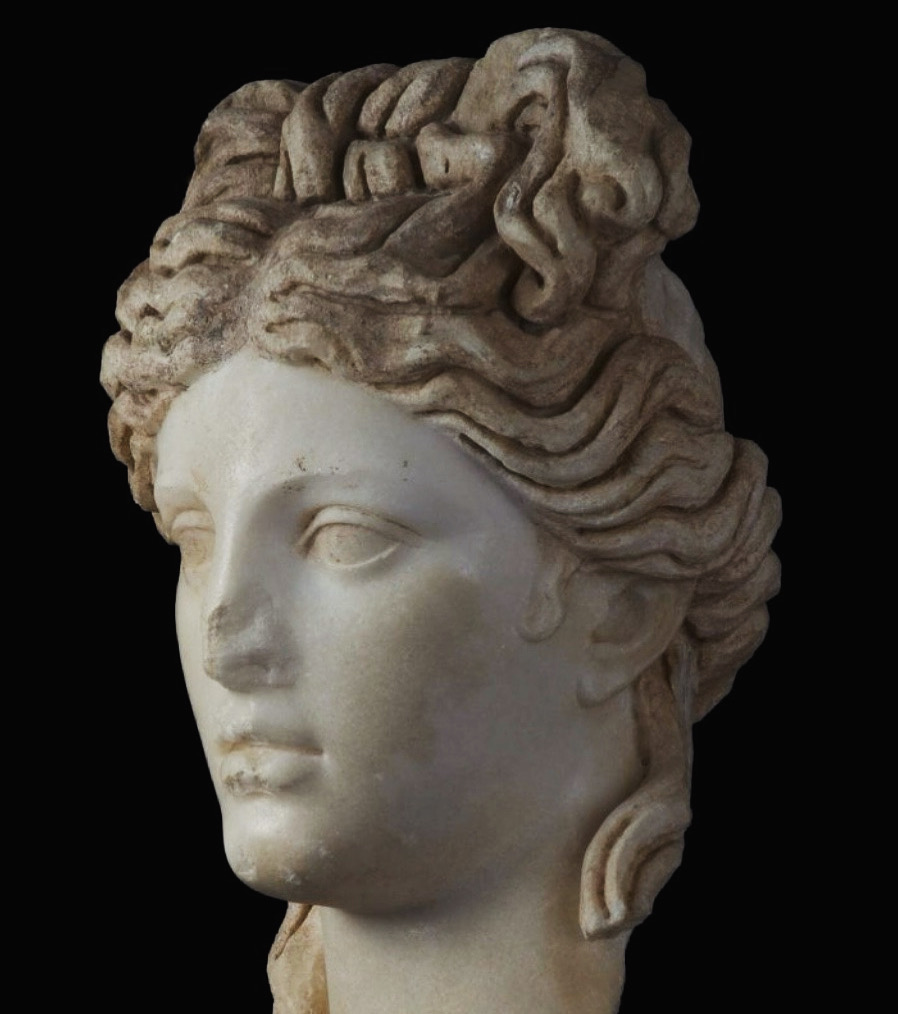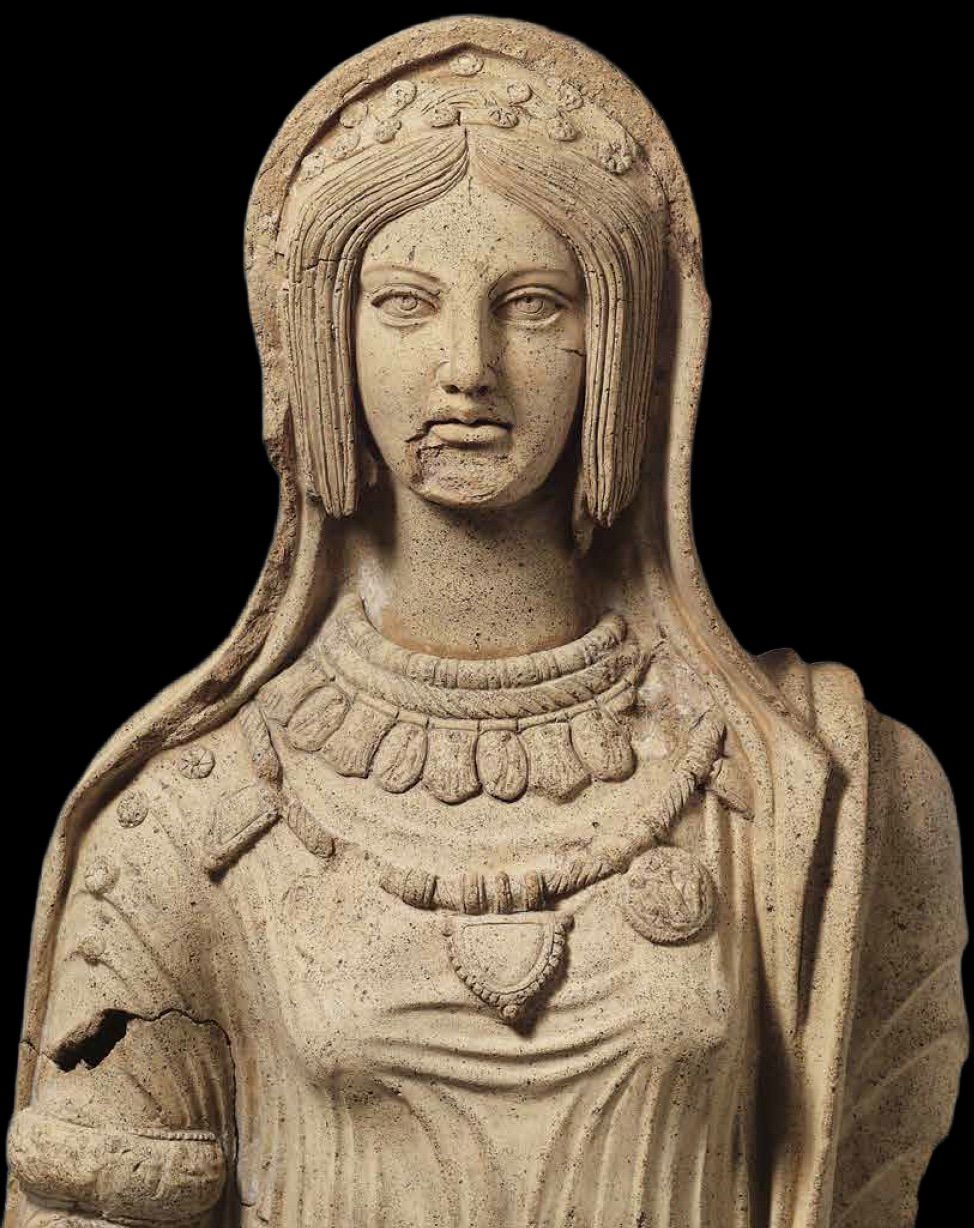This is one fascinating gentleman, in several respects. He is a plaster Roman overcast of one of the most famous sculptural groups from Classical Athens: the Tyrannicides.
The original bronze group hailed from 477 B.C. Athens, sculpted by the greats Kritios and Nesiotes to commemorate an important (and likely fictionalized and pretty juicy) moment in the polis’ history. Installed as tyrants and living large in the Acropolis, the Peisitratid family had enjoyed a stranglehold over the city’s politics for over a generation and the citizen body was beginning to chafe.

Long story very short, the tyrant’s corrupt brother made erotic overtures towards the beautiful youth Harmodius, who spurned them and reported back to his older lover Aristogeiton. Umbrage was taken, plots hatched, and during the Panathenaic festival the two men smuggled in daggers among laurel wreaths intending to do away with both the ruler and his brother. The pair of vengeful patriots were executed for their troubles – dead but celebrated ever more especially after the tyranny officially fell four years later.
The full statue group showed the ‘tyrannicides’ nude, fighting shoulder to shoulder and brandishing weapons, and is known only from Roman copies (the one in Naples shown in the second slide).
The fragmentary plaster face from Baiae here, shows Aristogeiton, and its survival a rare glimpse into the mechanisms by which artisans produced copies of the Greek greats. Preserved in the plaster are all the dings and surface scratches from the original bronze (fun, eh?), which (we think) would be then used to create a one-to-one copy in marble.
Nearly four centuries later, Roman interest in the Athenian historical episode and its commemoration is most interesting. One wonders whether the fame of the Greek sculpture was the appeal, or whether it was the moral of the story – brave rebellion against forces of oppression – that struck a chord.



